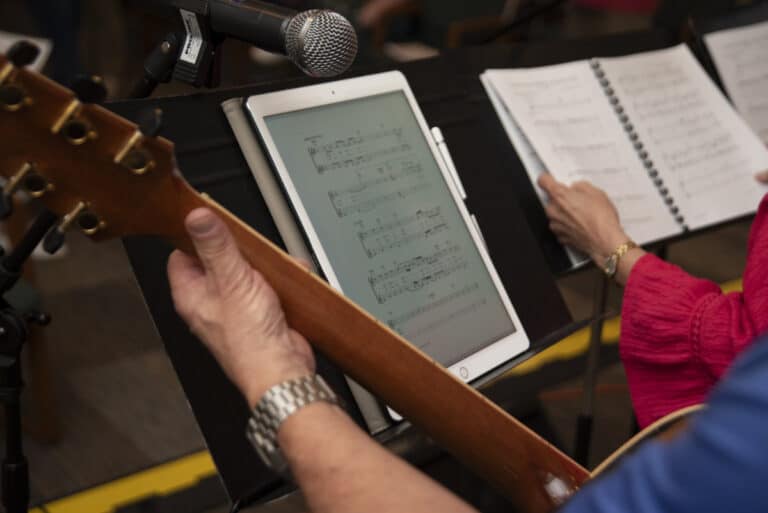Proper breath support is the very foundation for good ensemble singing. In part one of this series, we explored how we can know for certain when we are breathing from our diaphragm. Now that we’re armed with the acute awareness of the source of our breathing, we’re ready to move forward in our quest to master sustained diaphragmatic breathing that produces great vocal production.
Move from awareness to change
Altering a behavior that holds negative consequences can be extremely difficult, but the desired change always begins with awareness. For example, knowing that our lack of exercise will cause weight gain is the beginning of the change process; but unless we actually begin exercising, we’ll never achieve the benefits. Awareness is never enough – eventually, we must actively change our behavior to achieve the desired results.
For singers, the awareness of diaphragmatic breathing is the beginning of the change process, but it doesn’t stop there. Unless we move beyond our awareness and actually change the way we breathe, we’ll never properly support our singing.
How do we change the way we breathe? By relearning.
Because breathing is mostly an involuntary action, we never analyze it. Our bodies automatically do that for us. Here, however, we’re consciously attempting to take control of an involuntary action to provide a better vocal outcome.
Start with two exercises for diaphragmatic breathing
Taking control of our breathing begins with two simple exercises that can be done several times per day.
The first exercise is to produce an elongated hissing sound. Take a deep breath intentionally from the lower abdomen region, with shoulders remaining still, and create a “sssssss” sound. Sustain the hissing sound for as long as possible, and with your hands on tummy, feel it collapse as the air is expelled. When all your air is gone, take a few normal breaths, and then try it again.
As you continue repeating the exercise, become more focused on inhaling the same way you’re exhaling, except without the hissing sound. As your awareness increases, stay laser focused on exactly how this breathing feels in your body, the muscles being used, and the difference compared with normal breathing. You’ll begin noticing the change that’s taking place.
The second exercise begins connecting our voice with our breathing. Simply inhale using the diaphragm as in the previous exercise, and exhale while saying “ahhhh.” As you near the end of your breath, stop saying “ahhhh” and let the air rapidly escape. The entire exercise should last only 3 or 4 seconds. Repeat the exercise several times. Be very mindful of the rapid escape of air from your abdomen, keeping your shoulders still while inhaling and exhaling.
Now, try to add pitch to your “Ahhhh” by starting on a high note and quickly sliding down to a very low note through the end of your exhale. Again, this should only last a few seconds. Continue to be mindful of the flow of air from your tummy.
Build muscle
Both exercises above provide the beginning work of building good muscle control required for breathing properly from your diaphragm. Like any other muscles in our body, the muscles surrounding our lower abdomen must be used and strengthened to help provide the breath support needed for singing. And like so many things in musical pedagogy, repetition is critically important.
If you really want to make a change in your singing, begin running these exercises a few times a day. Learning to sing with good breath support is a process – but it cannot and will not take effect without dedication. If we can make a steadfast commitment to doing these exercises for diaphragmatic breathing, we will achieve success in improving our vocal production.
Written by Steve Petrunak. Copyright © 2023, Catholic Liturgical Ensemble Formation.



